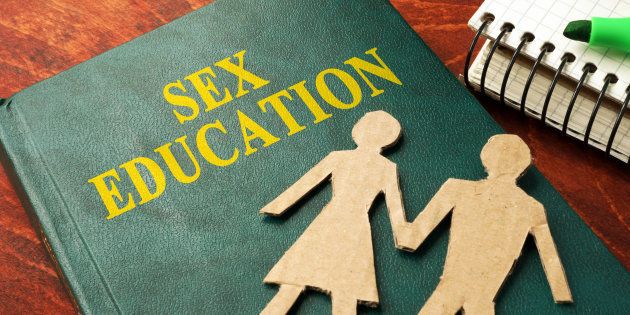
Listening to CBC's The Current, I had a flashback to one of my earliest experiences teaching a puberty class, sometime in the 1980s.
I was answering their written questions when I came across one about a woman and a horse. In those days, kids' access to porn was through magazines and videotapes – you know, those things that were supposed to be locked up in the cabinet?
If memory serves, I answered the best I could without being too graphic. I let them know that sexual activities with a person and an animal is called bestiality, which is illegal because it exploits the animal. And although some adults like to watch those videos, they are not for children.
I am not sure how I made it through the rest of the day.
The introductory lesson we used in puberty classes for 10 and 11-year-olds included asking where they got their information about puberty and sexuality. I began to ask classes whether they had computers at home and if they had access to the Internet. Then I asked whether they had ever come across images that upset, frightened or grossed them out. Inevitably, at least half of the hands would go up.
I wanted to know how they handled it.
Most of them said they would "exit" or shut off the computer. I also suggested that they tell an adult that they had come across these images so that they could deal with their feelings and have their questions answered. Hopefully, the adult(s) at home could prevent any inadvertent reappearance of porn sites.
Their admission gave me the opportunity to tell them this was adult entertainment, that it was not a typical representation of how people were intimate with each other; and that it was not helpful for them to continue looking at it at their age.
We do not yet know for certain the effect of these images on children and adolescents. "Not helpful" is a safe guess.
Back in 1987, York University's Dr James Check said 12 to 17-year-olds were the primary consumers of pornography (address at Humber College conference, "Sexuality '87: Male Sexuality" April 23-24, 1987). In the age of the Internet, it is safe to say that children and adolescents have free access to explicit sexual images (as well as some very useful information, if they know where to find it). Some kids will seek out pornographic images out of curiosity and/or because they want to masturbate to these images.
Is pornography harmful?
The adolescent/adult use and misuse of pornography have been a pretty hot topic these past few decades. Feminists, academics (feminist or not), sex educators and religious critics have weighed in on the potential ill effects; e.g., the porn-driven sexual scripts adopted by young people, the unrealistic expectations raised by perfect bodies, huge penises and never-ending streams of ejaculate, the need for increased jolts upping the ante in visual violence; and the normalisation of sexual activities which, although considered repugnant by some, may become an inevitable expectation.
While some adults choose the erotica or pornography with which they feel comfortable, others have become increasingly dependent on it, disturbed by their inability to relate intimately with real, live lovers. However, while there is plenty of ink spilt on these issues, the academic literature is far from definitive.
We do not yet know for certain the effect of these images on children and adolescents. "Not helpful" is a safe guess.
Consent and choice
Guiding principles for sexual health education include comprehensiveness. Talking with children and adolescents about porn is part of sex education. The cornerstone of teaching about sexual activity is, as always, consent.
When friends encourage them to watch porn, when they are asked to send sexual images of themselves, or when their images are sent on for the entertainment of others there, is a clear lack of consent. Talking with older adolescents about pornographic scenarios and the portrayed lack of consent as well as the normalisation of violence is critical to their understanding of how damaging some of these scenarios may be to their sexual development.
Frank discussions about the reasons why they should wait until they are older to make these decisions are a critical component of comprehensive sexual health education.
People who are raising children - and their allies in the classroom - need to face reality: children and adolescents are exposed to images which we do not feel are appropriate for their age.
Frank discussions about the reasons why they should wait until they are older to make these decisions are a critical component of comprehensive sexual health education. We do not need to be judgmental or prescriptive, but we do need to try to dissuade them from using porn while they are children.
I look forward to the day when erotica and pornography for adults will be like fair trade coffee or chocolate: made by participants who have a stake in the game; enjoyed by people who savour what they have chosen.
In the meantime, this does not include our children.
